|
Label (Bell):
|
W. Leonhardt
Instrumentenmacher
Erfurt
|
|
Model:
|
Single F and E♭ alto (with change tap) |
|
Serial Number:
|
none
|
|
Date of Manufacture:
|
ca. 1905 - 1910 |
|
Key(s):
|
F or E♭ alto depending on tap setting |
|
Valves:
|
3 rotary (right handed) and 1 rotary tap |
|
Bore:
|
1.185 cm. |
|
Mouthpiece Receiver:
|
1.05 cm. |
|
Bell Flare:
|
seamed with wide but shallow gusset |
|
Bell Throat:
|
6.0 cm. |
|
Bell Diameter:
|
27.0 cm. |
|
Base Metal:
|
yellow brass |
|
Finish:
|
raw brass |
.
(click on photos for larger view)
|
|
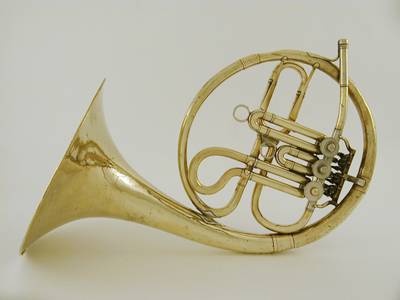
|
Willy Leonhardt was born June 25, 1880 in Arnsgrün, Germany.
He learned the profession of brass instrument maker in Markneukirchen. On
March 14, 1899 he moved to Erfurt to spend his journeyman years as it is said
"wandering" among various makers. It is probable that he worked there with Eduard Kruspe.
On August 13, 1902 he went to Munich possibly to work with Anton Schopf(Senior) then to
St. Petersburg probably to work for Julius Heinrich Zimmermann.
He returned to Erfurt on September 21, 1905 where he married Minna Herzog from
Büßleben, and became an independent instrument maker.
Other known examples of Leonhardt instruments are a rotary valve Cornet with a triangular
arrangement of the valves,
and a concert trumpet with a very thin pure silver bell.
Curiously, the heart-shaped patched on the outside of the bell (photo, above left) does
is apparently not a repair as there is no corresponding damage to be seen on the bell
interior.
|
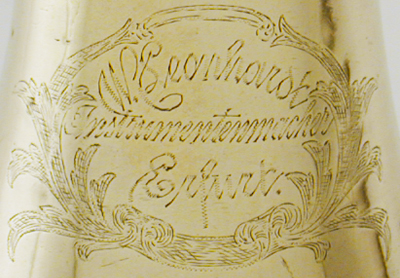
|
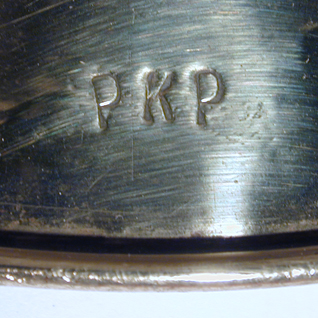
|
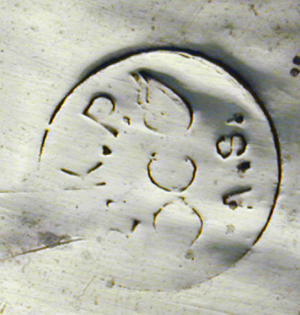
|
The two stamps on the outside of the bell near the rim indicate that this horn was the
property of the Polish National Railroad (Polskie Koleje Panstwowe or PKP) Band.
In connection with the liquidation of the Old Zagórze workshops, in 1892,
about 400 employees here moved to Nowego Sącza business, thereby increasing staff
workshops to over 500 people. while significantly enriched the cultural life
since arriving from the Old Zagrz, brought with them musical instruments,
giving seed to this day acting brass band then known as the Workers' Imperial Orchestra,
Royal Eastern Railway Workshop.
It operated under the official name: Department of Music, CK Railway Workers in Nowy Sacz,
making his attempt in leased from SKZ "Force" room until 1907, when it opened, "Workers'
House", built by contributions from railroad workers socially, the orchestra is also
available. The founder and first president of the orchestra was Peter Ekiert, a first
conductor was Kazimierz Kirschanek. In 1908 he was replaced by Jan Jelinek, in 1910 the
band played at the unveiling of the Grunwald Monument in Krakow!
This is already the largest staff in the workplace, in the short term strength were
clearly affecting the political and social life and cultural city and its environs.
In 1892 he was inspired by railroad workers here Kształcąco Association - relief,
"Strength" and the First of May demonstration in Nowego Sącza arranged as early as 1890.
SKZ "Force" also had a choir. In 1906 was predominantly composed of railroad workers
singing CK Association Workers 'Echo'.
Bands actively participated in many important events for the local cultural and patriotic.
[Automatic translation from the original Polish by Google.com]
|